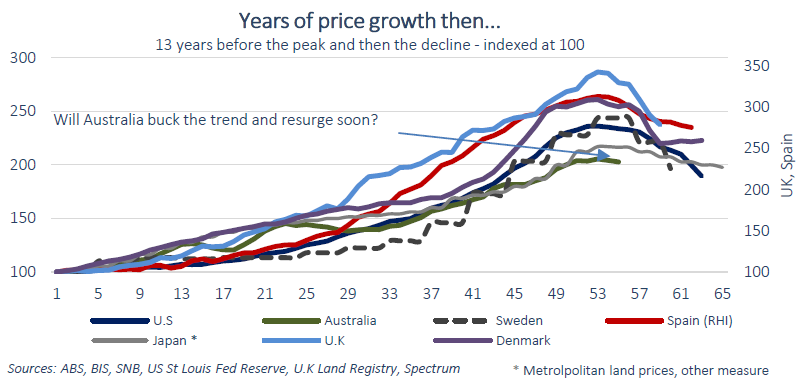There appears to be a competition among Australian financial commentators of late about who can give the most bearish outlook on residential property prices. First down 5%, then 10%, 15%, 20% and recently 25%. The truth is no one really knows. What our study of other developed markets suggests, though, that after sustained periods of credit-fueled price appreciation residential property often falls in the region of 15% to 30%. This decline can be sharp or prolonged. The pace of the drop depends largely on how tight lending conditions become. In Australia, home lending growth has slowed notably of late. Should this trend continue the risk jumps that Australia’s property market could echo severe declines seen elsewhere over history. At Spectrum, we are preparing for the risk of sustained residential property weakness.
Similarities in booms
Below we compare several property market booms at different times from various countries. The periods compared are the thirteen years leading up to the peak. As can be seen in the graph below a similar pattern emerges.

But Australian prices grew slower than the other markets
That’s true. In the thirteen years to the recent peak of December 2017 Australian property was a laggard in the boom property cycles compared. There is a good reason, however.
Australia’s property boom is a prolonged journey since the 1990s. Unlike other countries, there was no recession to help cleanse the credit system – just a road bump during the global financial crisis. The slower climb in recent years was built on a multi-year price surge previously. In long-dated property booms, Australia is a modern-day top performer!

